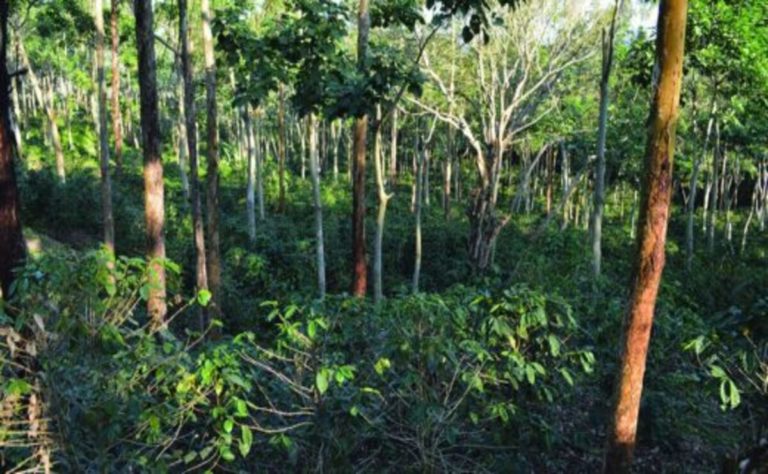10 Benefits of Agroforestry: Promoting Sustainable Farming Practices
Agroforestry is a way to use land that combines agriculture and forestry by growing trees, shrubs, and crops on the same piece of land. This system has been practiced for centuries by indigenous communities and has gained renewed interest in recent years as a sustainable alternative to conventional agriculture.
Agroforestry helps farmers and the environment in many ways, which makes it a good way to work toward food security and sustainable development.
In this article, we’ll explore 10 benefits of agroforestry in more detail.
1. Increased Crop Productivity
Agroforestry can boost crop productivity by providing shade, shelter, and nutrients to crops. Trees and shrubs can act as windbreaks, reducing soil erosion and preventing crop damage.
Trees can also make soil more fertile by fixing nitrogen, adding organic matter, and making the structure of the soil better. When maize, beans, and cassava are grown in agroforestry systems that include leguminous trees and shrubs, the yield of these crops goes up by a lot.
2. Diversified Income Streams
Agroforestry can provide farmers with diversified income streams, reducing their reliance on a single crop or product.
Trees and bushes can be cut down for their wood, fruit, fuel wood, and other products, which can be used to make money throughout the year. In some cases, agroforestry can also provide non-wood forest products like honey, mushrooms, and plants that are used to treat illnesses.
3. Improved Soil Health
Agroforestry can improve soil health by reducing erosion, increasing organic matter, and improving nutrient cycling.
Trees and shrubs can help keep soil from getting worse by reducing the effect of rain on the surface of the soil, keeping the soil from getting too hard, and stopping nutrients from leaching away.
The roots of trees and shrubs can also help stabilize the soil, reducing erosion and improving water infiltration.
4. Climate Change Mitigation
Agroforestry can help mitigate climate change by sequestering carbon in trees and soil. Trees store carbon in their biomass and in the soil, reducing the amount of carbon in the atmosphere.
Agroforestry systems can also cut down on greenhouse gas emissions by making the soil healthier and reducing the need for chemical fertilizers.
5. Biodiversity Conservation:
Agroforestry promotes biodiversity by creating a diverse ecosystem that provides habitat for a wide range of plants and animals. The trees and shrubs in agroforestry systems provide food, shelter, and nesting sites for wildlife, including birds, insects, and mammals.
6. Water Conservation:
Agroforestry can help conserve water by reducing water runoff and increasing water infiltration. The tree roots in agroforestry systems help to hold water in the soil, reducing soil erosion and improving water quality. Additionally, trees and shrubs can help to reduce evaporation from the soil surface, conserving water in the soil.
7. Improved Livelihoods:
Agroforestry can improve people’s lives by giving farmers a more stable source of income and making sure there is enough food for everyone.
Diversifying ways to make money and making people more productive can help reduce poverty and make people more resilient to climate change and other shocks.
8. Sustainable Timber Production:
By using trees that are grown to make wood, agroforestry can provide a sustainable source of wood. By growing trees in an agroforestry system, farmers can avoid the bad effects on the environment that come with monoculture tree plantations, such as the loss of biodiversity and soil degradation.
9. Reduced Pesticide Use:
Agroforestry can cut down on the use of chemical pesticides by promoting a diverse ecosystem that helps keep pests away on its own. Agroforestry can help control pest populations without using chemical pesticides. It does this by giving pests’ natural enemies, like birds and helpful insects, a place to live.
10. Cultural Preservation:
Agroforestry can help keep cultural heritage alive by keeping traditional ways of using land and promoting the cultural values that go along with them. Agroforestry systems often incorporate traditional crop varieties and non-timber forest products that are important to local cultures.
Conclusion:
Agroforestry is a sustainable and profitable way to manage land that provides numerous benefits, including increased soil health, diversification of income streams, climate change mitigation, and biodiversity conservation.
Also Read :







